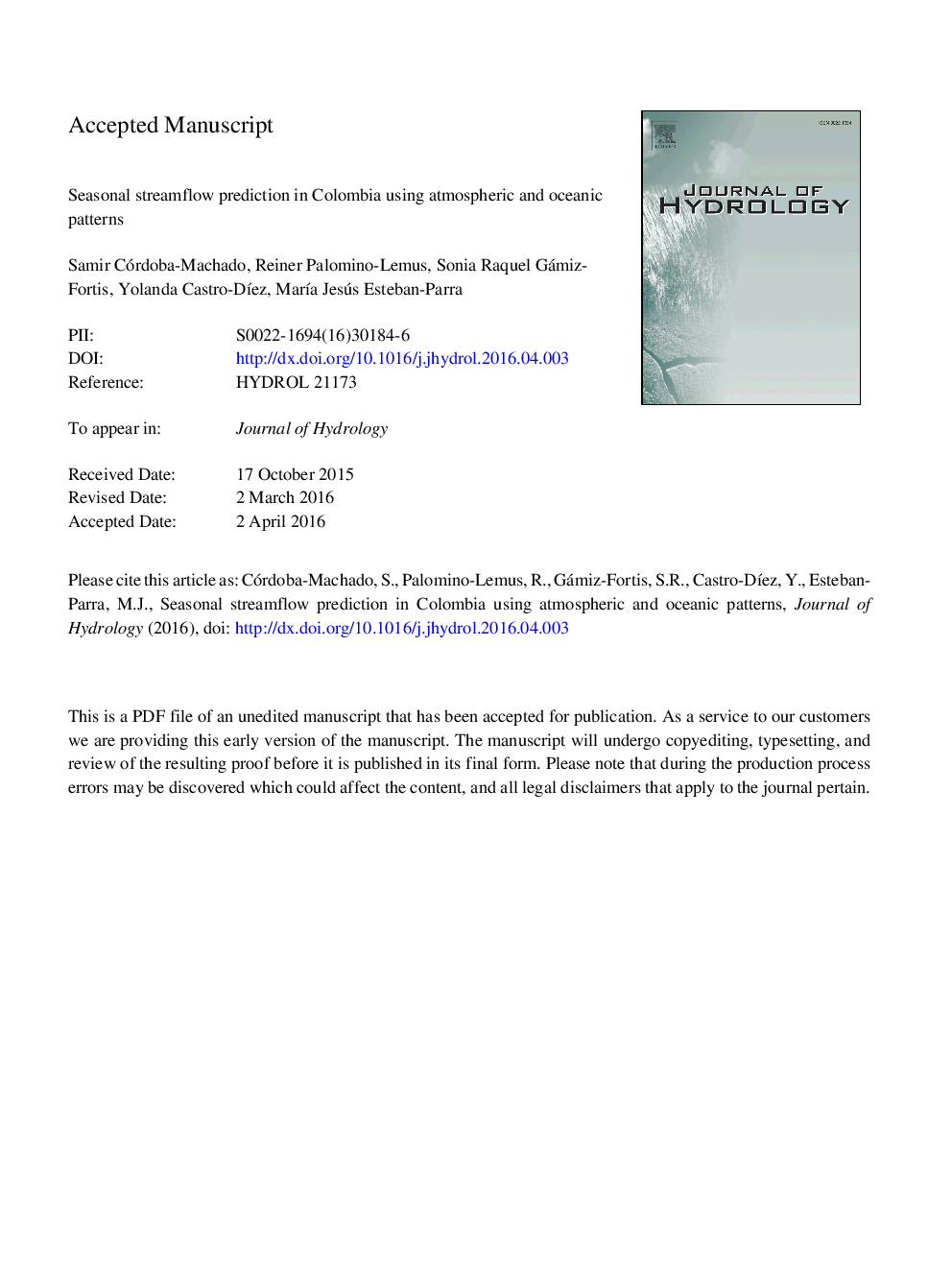| Article ID | Journal | Published Year | Pages | File Type |
|---|---|---|---|---|
| 6409563 | Journal of Hydrology | 2016 | 54 Pages |
Abstract
The predictability of the Magdalena River seasonal streamflow anomalies is evaluated using previous Sea Surface Temperature (SST), Precipitation (Pt) and Temperature over land (Tm) seasonal anomalies. Through a moving correlation analysis of 30Â years, several regions that show stable significant teleconnections between the seasonal streamflow and SST, Pt and Tm from previous seasons have been identified during the period 1936-2009. For lags from one to four 3-month seasons (i.e. up to one year) for the SST and one to two seasons (i.e. up to six months) for Pt and Tm, the Magdalena River seasonal streamflow presents significant and stable correlations with the tropical Pacific SST (El Niño region), with Pt in South America and with Tm over the north of South America, mainly at lags of one and two seasons. The first PCs resulting from the significant and stable regions of the SST, Pt, and Tm fields are used in a forecast scheme to predict seasonal streamflow anomalies. The prediction based on this scheme shows an acceptable prediction skill and represents a relative improvement compared with the predictability of teleconnection indices associated with El Niño, which are traditionally used to predict streamflow in the country. This improvement is particularly more noticeable when lag between streamflow and predictors increases.
Keywords
Related Topics
Physical Sciences and Engineering
Earth and Planetary Sciences
Earth-Surface Processes
Authors
Samir Córdoba-Machado, Reiner Palomino-Lemus, Sonia Raquel Gámiz-Fortis, Yolanda Castro-DÃez, MarÃa Jesús Esteban-Parra,
